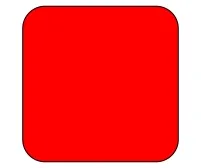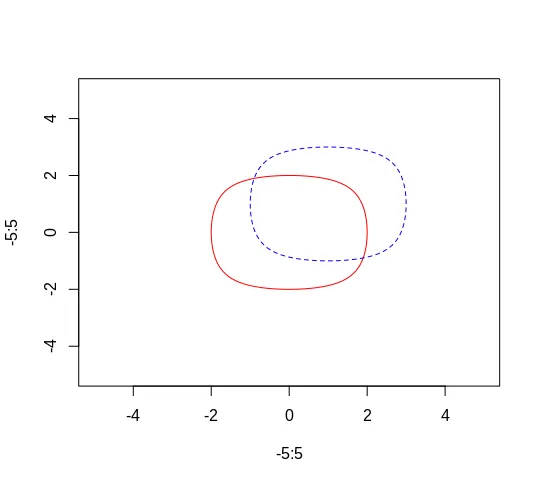这是一个圆角正方形的代码,我想知道是否能够得到一个类似的图形——squircle(四分之一圆形)。
维基百科上说:
尽管构造圆角正方形在概念上和物理上可能更简单,但squircle有较简单的方程,并且可以更轻松地进行推广。
维基百科上说:
尽管构造圆角正方形在概念上和物理上可能更简单,但squircle有较简单的方程,并且可以更轻松地进行推广。
{
x<-c(1,1,0,0)
y<-c(1,0,0,1)
rad <- max(x)/7
ver<-25
yMod<-y
yMod[which(yMod==max(yMod))]<-yMod[which(yMod==max(yMod))]-rad
yMod[which(yMod==min(yMod))]<-yMod[which(yMod==min(yMod))]+rad
topline_y<-rep(max(y),2)
topBotline_x<-c(min(x)+rad, max(x)-rad)
bottomline_y<-rep(min(y),2)
pts<- seq(-pi/2, pi*1.5, length.out = ver*4)
ptsl<-split(pts, sort(rep(1:4, each=length(pts)/4, len=length(pts))) )
xy_1 <- cbind( (min(x)+rad) + rad * sin(ptsl[[1]]), (max(y)-rad) + rad * cos(ptsl[[1]]))
xy_2 <- cbind( (max(x)-rad) + rad * sin(ptsl[[2]]), (max(y)-rad) + rad * cos(ptsl[[2]]))
xy_3 <- cbind( (max(x)-rad) + rad * sin(ptsl[[3]]), (min(y)+rad) + rad * cos(ptsl[[3]]))
xy_4 <- cbind( (min(x)+rad) + rad * sin(ptsl[[4]]), (min(y)+rad) + rad * cos(ptsl[[4]]))
newLongx<-c(x[1:2] ,xy_3[,1],topBotline_x,xy_4[,1], x[3:4], xy_1[,1],topBotline_x,xy_2[,1])
newLongy<-c(yMod[1:2],xy_3[,2],bottomline_y,xy_4[,2], yMod[3:4], xy_1[,2],topline_y ,xy_2[,2])
par(pty="s")
plot.new()
polygon(newLongx,newLongy, col="red")
}


